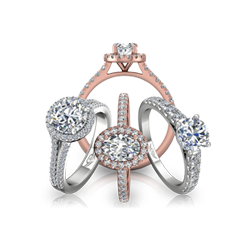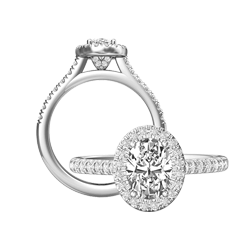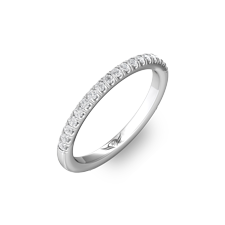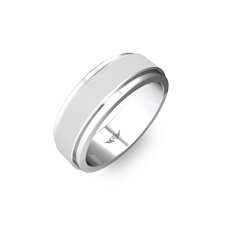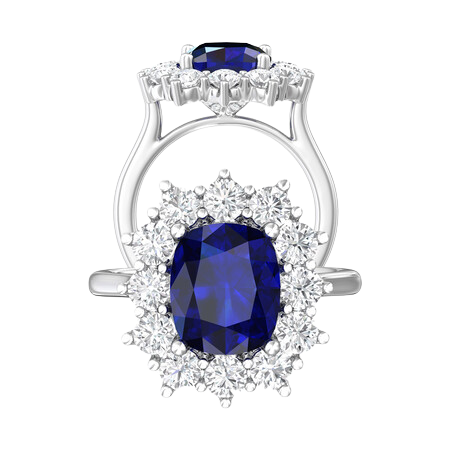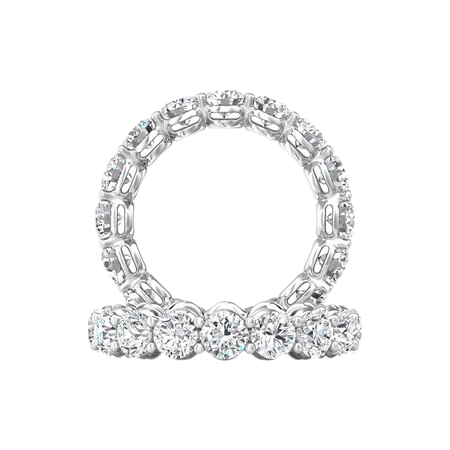FAQ's
KNOWLEDGE IS BUYING POWER
Martin Flyer sells engagement rings with a center diamond and also without a center diamond so you can provide your own. Our rings with center diamonds only use GIA-certified diamonds and start at $1999. Our Engagement rings that are sold without a center diamond start at approx $599
4-6 weeks
Martin Flyer loves to accommodate our customer’s preferences and therefore the majority of our styles come bigger and smaller. You should work closely with your local authorized Martin Flyer retailer to get the exact style and size of the ring you want.
Our engagement ring centers normally start at .30ct and go as large as you want them to.
Our favorite setting that gives a large but stylish look is a Halo engagement ring with either a round brilliant, oval, or pear shape diamond.
Price just means it costs more. The best diamond is an opinion of what of the Four C’s are most important to you and your partner. As an example, we believe that Cut is the most important C with Color and then Clarity last. Carat is interchangeable based on how you rank Cut, Color, and Clarity. We would rather have an excellent cut with an I color and SI2 clarity so that you could have a larger stone like a 1ct as long as the 1ct is 6.35-6.5mm than a J SI1 that would be a similar price. For more information on the 4C’s click here.
We believe the cut is most important and is what maximizes brilliance – defined as the white light you can see reflected.
The average dollar spent on an engagement ring is $5000. You can get approx .70ct with ring for .30ct. This would typically be a halo style to maximize the look for your budget.
Although we believe this is an outdated benchmark, the most practical benchmark for the average spent today is $5000. You can use this average to determine how that works for your preferred budget.
It’s ok to feel overwhelmed! Buying your first diamond can be complex and confusing, so finding the proper expert to help you find what’s most important to you in a diamond is essential. This is also why we caution buying directly from the internet if you do not understand all of the letters and numbers as well as other important characteristics that aren’t always mentioned on the certificate. The ‘naked eye test’ of seeing the diamond and using an expert like a recommended retail jeweler in your area is always suggested.
The only trick is looking at them to find the one you like the best.
That is a personal preference. We think what’s most important is the individual being able to get the style and the shape that makes them happy and not worrying about any societal pressures.
That’s a tricky question as there are many factors that go into your ring and its long-term health and security. Sometimes the ring that costs more is made better, but sometimes not. You need to be careful with very thin diamond rings – even though they are pretty, the less metal that is holding in the diamonds means a larger chance for diamonds to fall out. Having your jeweler check your ring every 6 months is always a good idea. Check out our Classification breakdowns to see which setting may work best for you.
There is always the opportunity to purchase larger diamonds are more elaborate engagement ring settings. Again that’s a personal preference. Martin Flyer offers a setting classification (Encore) specifically for those interested in upgrading their rings and to commemorate anniversaries or just because!
Style is a matter of personal preference. Different metals have different strengths and weaknesses from a practical standpoint. For example, platinum is stronger, whereas gold is harder. Friction will cause gold to flake off over time, while platinum will just move but not flake off. Therefore, it is not recommended to mix metals since they might affect each other’s long-term wear.
